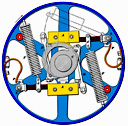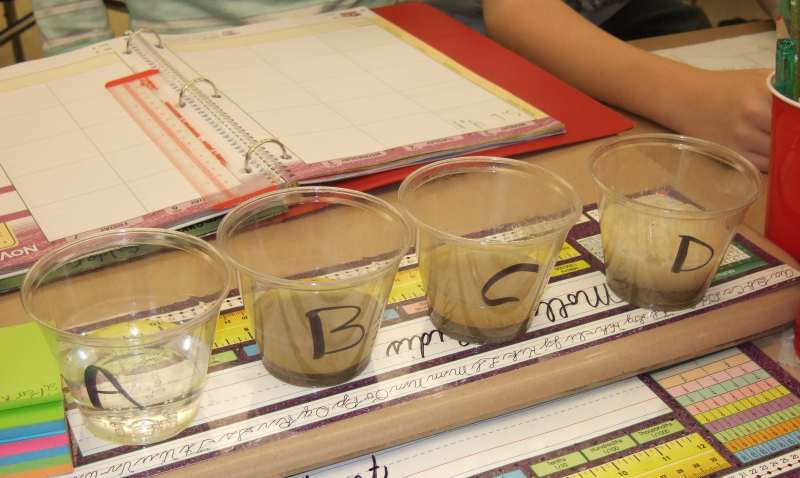
| Is it Alive? | |||
General informationHere in Andover 4th graders study ecosystems in the fall. They look at the interactions between plants and animals in a terrarium they construct. This activity goes more to the basics and looks at the problem of "what does it mean to be alive." Something that is still much debated, and Peter Ward is always pushing for them. This is an activity in Stars Planets Life, page 47. Though the presentation materials are not from that, they follow the general plan of the activity. You can find a slightly different version of this activity here (Activity 2), but that one is aimed at older students. ResourcesNasa's Astrobiology Magazine is a good place to pick up "what's new" type information. Peter Ward's "Life as We Do Not Know It" is an easy read and provides lots of interesting ideas. Jonathan Lunine "Astrobiology: A Multi-Disciplinary Approach" covers all of the background you'll ever need for this activity. Movie clip:If you have problems you may need to put this in to the presentation yourself (it's the last slide). You can find it as a link on this page: http://mit.edu/7.01x/7.013/study.html. Here's a direct link to the file: http://www.marietta.edu/~spilatrs/biol202/budding_yeast.mov Though I didn't use them, some other clips are here.
|
|||
General plan |
|||
Presentation materialsMaterials for the "Is It Alive?" activity. Package of string bean seeds. Note on the activityI modify it slightly by adding a 4th cup. In the 4th cup I'll put seltzer water only (i.e., no sand). I make this the "control" for something fizzy. I created a new handout to use with this extra cup. Also, after the initial observations I continue with the presentation. This takes their eyes away from the cups and makes for quite an impression at the end. I find 2+ heaping tablespoons of sand is enough per cup. Bring a bucket to dump all the sand into at the end so that it can be dumped outside and not down the drains.
|
|||
| Notes | |||
As this is my first visit I'll give them a little background of the activities we'll be doing over the year. Not too much, just enough to make them wonder. Not in the presentation, but I'll ask them to define ASTROBIOLOGY after slide 3. At slide 5 I have them list out things that make something alive. A lot of times there is some overlap so I'll steer them to group them together to keep the list simple. Once they have the list written up I'll pull out a package of bean seeds and ask one of the students to describe it, then take one out. We then look to see if it's doing any of the things that are on the list on the board. After slide 11 we do the activity. See the note above about the changes I made. After the initial observations we continue with slide 13, keeping an eye on the clock to do the additional observations. For slide 16 I don't try and explain much other than to say if something was alive the detector would have detected something. A reasonable summary can be found on Wikipedia. Slide 18 plays up the controversy a bit more than it really is; the point of this slide is more to point out how much we didn't know when we went to Mars looking. By the time we get to then end of slide 22 the activity should be over. Eventually a student comes up with what it is that's alive, a lot of times because of the smell. I'll then pull out the containers for the mystery ingredients.
|
|||
|
|||
Picture from the end of the experiment, 11/5/08, High Plain Elementary School
